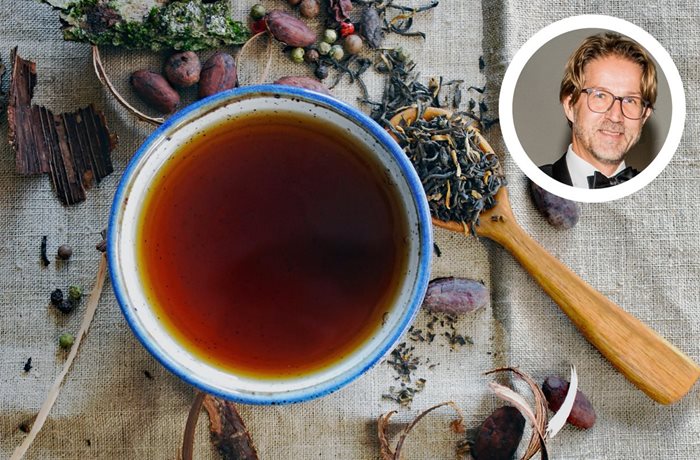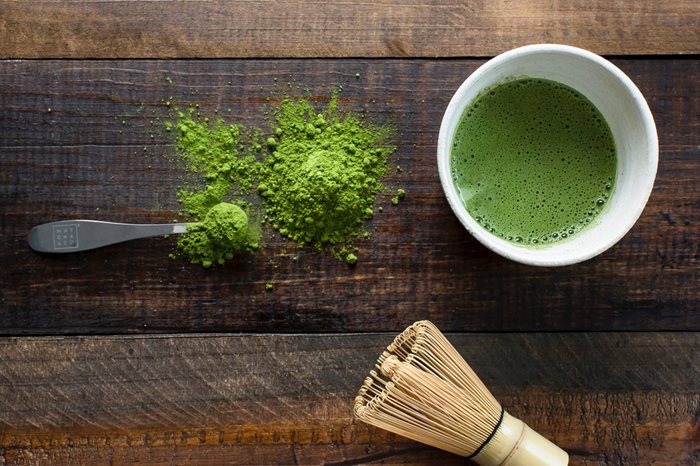With today’s consumers savvier than ever when it comes to beverage choice, it’s time for operators to take advantage of the wide variety of premium teas on the market, says Kai Ellerbrock, Managing Partner of German coffee and tea wholesaler, Market Grounds

At
Market Grounds, we still frequently see operators offering the same basic menus of black and green tea served with a cup of hot water from under the counter. Yet, there are so many more hot and cold tea options to complement the modern dining experience.
There are aged and fermented teas like pu-erh, colourful turmeric lattes, or CBD-infused teas and ready-to-drink products – all of which most foodservice operators haven’t yet explored.
The premiumisation of tea is a natural extension to what has been taking place with fine wines, specialty coffee, craft spirits and beer over the last couple of decades. The success and momentum of this development is now changing the face of the tea category in restaurants, cafés and hotels, but also retail channels.
Ongoing market premiumisation has recently led one of the world’s biggest players in the tea market to review its business. Unilever’s Ekaterra division, which manages prominent retail tea brands including Lipton, PG Tips, Pukka, T2 and TAZO, has been struggling for some time as consumer tastes have shifted towards more premium tea brands, and was recently sold off for $5.1bn.
I find it fascinating that many operators in foodservice do not see the opportunity in the tea category, especially in a market like the UK, where coffee and tea are consumed in virtually equal volumes.
Tea is a natural complement to the modern foodie dining experience and offers a healthier choice. Many consumers are already familiarising themselves with premium teas at the grocery store. Operators can harness this retail opportunity as consumers have learned new at-home brewing rituals during the pandemic and are actively expanding and broadening their tasting senses.
“All that remains to be seen is how, when and which operators will be poised to reap the benefits”
Of course, different operator types, whether restaurants, hotels, coffee shops or conference centres, will need to differentiate their tea offer according to the place and location of consumption.
Nevertheless, one of the biggest challenges of serving tea in comparison to coffee is that the steeping process takes time. In the coffee shop environment, most consumers expect their coffee to be pulled within 30 seconds and that the beverage will be served to enjoy immediately. With traditional teas, there is a steeping time of around 2-5 minutes on average if you’re doing it right. For some customers, we have used or combined special cut or ground teas, to suit that to-go attitude, providing a fast and strong infusion in the cup. Also, proprietary flavouring or sweetening technologies help to meet today’s consumers’ expectations.
Market Grounds has some customers who are trying to sell loose tea in predominantly food-to-go environments, which can be operationally challenging. However, sit-in environments give operators the space and time to prepare tea in a proper way. This setting also enables them to serve the tea with proper crockery alongside scones or cake, providing a pleasurable space for customers to really take the time to enjoy the tea.
Next to the loose tea opportunity in foodservice, I anticipate operators will be introducing far more multisensory experiences with tea that are more challenging, to be prepared at home, providing new opportunities to attracting customers in foodservice.
The natural colour of many tea beverages will lead consumers to the end of the Instagram-friendly rainbow, as colour is an issue in foodservice.

Matcha, chai and turmeric lattes help bring in non-coffee customers to the coffee shop
Texture is also an interesting aspect, with bubble tea, which is beginning to make a comeback, alongside chai, matcha, turmeric lattes and kombucha, which have been popular in the US for some time, becoming more present and attracting additional non-coffee consuming customers in the market.
During the past two years, consumers particularly in the United States, Europe and Asia Pacific have been very excited about antioxidant-rich and health benefits commonly found in functional beverages.
Antioxidant benefits are probably the most well-known natural benefits of tea, and products that claim to contain “antioxidants” are consumed stronger than ever before.
Tea’s strong antioxidant capacity comes from tea catechins, which are a unique group of flavonoids present only in tea and chocolate and are known for providing higher amounts of antioxidants than other known polyphenolic compounds, such as those present in fruits and vegetables. Commonly, herbal beverages are prepped from natural ingredients of numerous morphological plant parts, such as stems, roots, leaves, buds, flowers, and fruits. CBD oil, which can be infused in and used to flavour tea, is another exciting area.
Generation Z is fuelling the demand for sparkling bottled iced fermented tea beverages. Flavour combinations with trending ingredients such as botanicals, flowers & Asian dessert flavours excite consumers. The success of these developments can be seen by the number of new product launches in the RTD segment as well when visiting coffee shops that carry iced teas all year round. Both consumers and operators appear ready to kick off a global revolution in tea culture that echoes that of coffee, and all that remains to be seen is how, when and which operators will be poised to reap the benefits.
As consumers become more health-conscious and sugary soft drinks are gradually being taken off the menu, tea is a wonderful alternative if done properly. We are already seeing some of our chain accounts creating tea-based refreshers and chillers and I believe that these beverages and forms of serving, along with many exotic, enticing flavours and colours, will take tea to centre stage.
While tea is widespread in out-of-home settings, operators should be aware that a poor-quality tea offer could also lead to poor views on the coffee programme that they’ve spent significant time and resources building. A lot of value is sacrificed from stocking run-of-the-mill retail brands that discount your business and deliver no points of differentiation from the operator next door.
Tea as a category represents a vastly untapped proposition for many operators in foodservice. Depending on the mode of service, its proper implementation is not without its challenges, but widening consumer knowledge and appreciation of the category means a varied well-curated tea offer should be a key part of any high-quality proposition. I don’t believe that any other beverage can equal tea when it comes to the aromas, flavours and colours but too many foodservice operators continue to live in the past when it comes to serving tea – today’s consumers are demanding so much more. I think tea in foodservice is still on day one!
For more from Kai Ellerbrock tune into our podcast episode: Unlocking the potential of tea in coffee shops
This article was first published in Issue 9 of 5THWAVE magazine.
Subscribe to 5THWAVE to receive each edition in print and digitally or sign up to our newsletter and be the first to read the latest articles and updates on World Coffee Portal research
